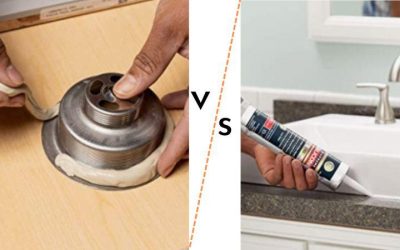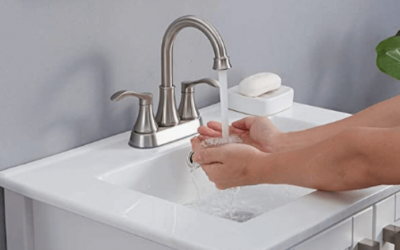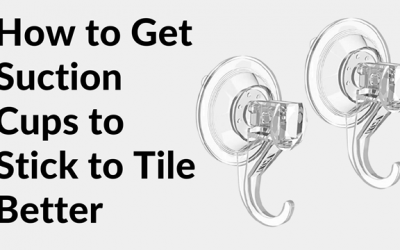If you are having a plumbing emergency, you may want to contact a professional plumber. However, in some less serious situations, you can solve some issues yourself.
This will be the case when it comes to blocking leaks in your bath or sinks. This can be done merely by using a plumber’s putty.
Unless you are a trained plumber or super efficient at DIY, you likely will not know what plumber’s putty is or how to use it.
Plumber’s putty is a handy sealant that you can use around the house.
To help educate you about this substance, this article will guide you through the use of plumber’s putty.
Equipment
You will only need a few items for this method. They should be fairly inexpensive and easy to obtain.
The only product you might have difficulty acquiring is the plumber’s putty itself. You will need:
- Plumber’s putty – as you may already have assumed, plumber’s putty will be an essential piece of kit for this method. For the most part, putty will be available in plastic tubs. You can find this in hardware stores or online, such as from here.
- A cloth – this will be utilized during the cleaning process. A cloth will need to be damp. A lot of people will already own cleaning cloth.
- Soap – again, this will be implemented during the cleaning stage.
- A towel – this item will be used to dry the area in your bathroom or kitchen. Towels should be easy to purchase from supermarkets, home improvement stores, or online.
- A sponge – this household essential will be used at the end of the instructions to get rid of excess putty. Sponges are great for cleaning since they absorb water and are abrasive.
Instructions
To effectively apply plumber putty, follow these instructions:
- Thoroughly wash the area where you plan to apply the putty. To wash this space, use warm water, soap, and a damp cloth. This will stop any dirt from interfering with your putty. Once it is sparkling clean, be sure to dry this area with a towel. Ensure that it is completely dry before you continue with these instructions.
- Put a small amount of the plumber’s putty in your hands. Mold the putty into a ball with your hands to warm it up. Keep doing this until you get a Play-Doh-like consistency. Plumber’s putty is safe to touch, though you may want to use gloves if your skin is prone to irritation.
- Mold this ball of plumber’s putty into a long rope or snake-like shape. This rope will need to be long and thick enough to cover the gap in your bath or sink. If you need more putty, merely get some more from the tub and repeat the previous instruction. If necessary, add this putty to your rope.
- Apply the plumber’s putty to the required area. Check that you have not left any gaps when you are installing the putty. Otherwise, it will be ineffective. Most people will use putty on circular spaces, such as drains.
- Press down on the putty until it is firmly where you need it to be.
- If there is any putty residue, be sure to clean this up. This can simply be done with soapy water and a sponge.
- Return any leftover putty to the tub. In most cases, this can be used again.
Of course, these are more general instructions for installing a plumber’s putty.
For more specific instructions, you should consult the product’s packaging. Different brands will have slightly different methods.
Top Tips
Here are a few handy tips to bear in mind when you are using plumber’s putty:
- After using the putty, store it in a cool and dry place. Be sure to seal it thoroughly to increase its longevity. Otherwise, your putty may become dry. In this state, it is unusable.
- Putty can not be used on every surface. You should check the packaging and instructions of a product to determine whether it can be used on a specific surface.
Frequently Asked Questions
How long does it take for plumber’s putty to dry?
This is a bit of a trick question. Unlike solvents, plumber’s putty does not really dry when it has been applied to a surface.
It maintains a similar consistency to when it is first formed, though it may harden slightly.
In some cases, you will need to wait a few hours before using the shower or basin in which you applied the putty. This time should be stated on the product’s instructions.
Can plumber’s putty be used on wet surfaces?
No, putty should not be used on damp surfaces. The reason for this is that the putty will not successfully stick onto damp surfaces.
This is why we recommend drying the surface that you intend to use the putty on with a towel after washing it.
Is plumber’s putty harmful?
Plumber’s putty is not particularly harmful. Of course, you should avoid consuming any putty, such as by eating it or breathing it in, as this could prove to be harmful. You should also avoid it contacting your eyes. It should also be kept away from pets, as it is not the safest substance for them to come into contact with.
Can you remove plumber’s putty?
Yes, this can be removed. In some cases, this can be done by hand. In other scenarios, you may want to use a knife to scrape away the putty. After you have removed the plumber’s putty, you should wash it.
Can you use plumber’s putty on plastic surfaces?
No, it is not recommended that you use plumber’s putty on plastic. Other sealant methods will be more effective at covering up leaks or gaps. Plumber’s putty can damage plastic, resulting in it becoming more brittle in texture.
Final Thoughts
While some household problems will need to be fixed by a licensed plumber, smaller issues can be fixed by you. With the above instructions and tips, you will be able to successfully use the plumber’s putty to fill in any gaps that water can leak from.
If you think your leaks is beyond the power of the putty then it’s time to call for a plumber for water leak repairs! Getting a plumber is a breeze with Best Plumbers Club. With our network of US plumbers servicing New Hampshire, Virginia, Pennsylvania, Washington, Connecticut, and beyond rest assured that there is a plumber near you that is ready to help!







